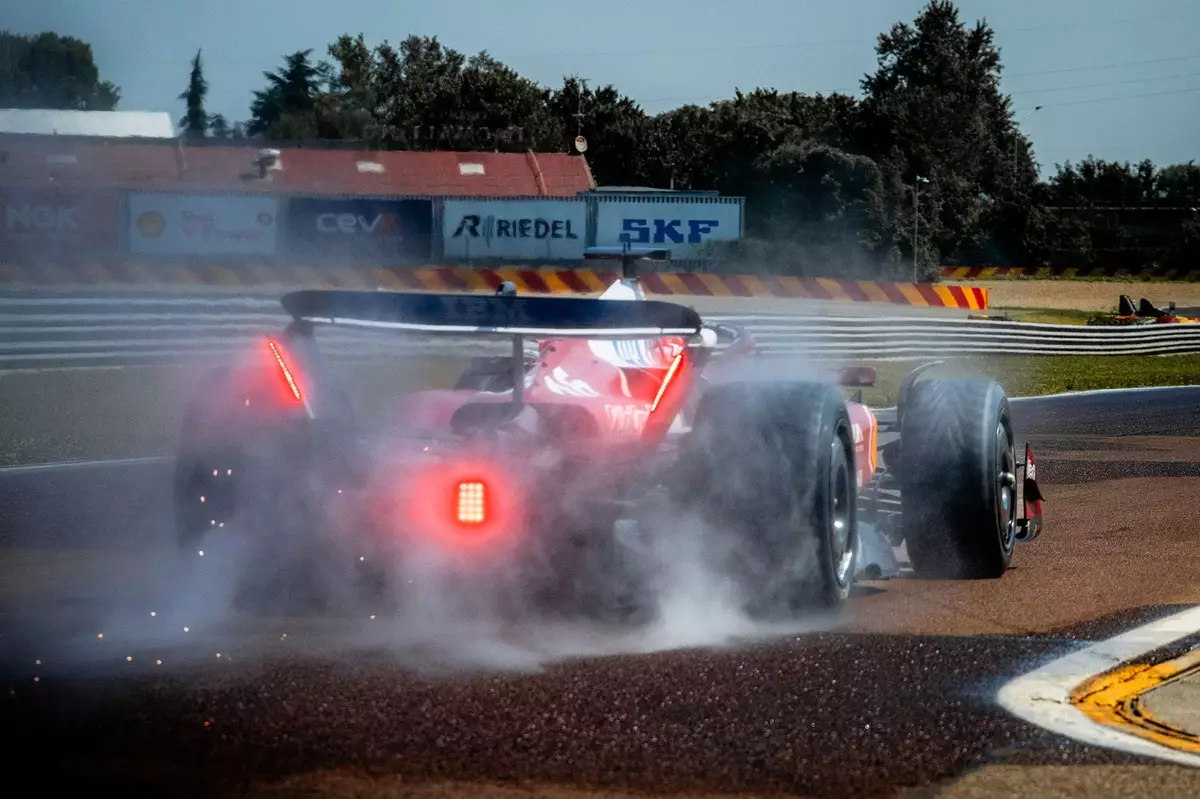Formula 1 is often seen as the pinnacle of motorsport innovation, where speed, technology, and engineering genius collide to produce an exhilarating spectacle. One of the most pivotal components in this intricate web of performance is the tyre. Among the various types of tyres that grace the track, the ‘wet’ tyre, distinguished by its blue sidewalls, plays a crucial role in moisture-laden conditions. However, the current state of wet tyres reveals not only their incredible potential but also the significant challenges that F1 races face during inclement weather. Pirelli’s latest attempt to enhance wet-weather performance shines a harsh light on the urgent need for change in a sport that thrives on precision and timing.
At racing speeds, the capacity of Pirelli’s wet tyre to displace a staggering 85 litres of water per second stands as a staggering feat of engineering. Yet, the unyielding reality is that seeing these wet tyres grip the asphalt at true racing speeds is a rare and often absurd occurrence. Instead, spectators regularly witness red flags—an indication that the conditions are simply too treacherous for racing—in races like the notorious Belgian Grand Prix of 2021 and the more recent Brazilian Grand Prix. Drivers are driven to conserve their track positions rather than gamble on switching to wet tyres, a decision that underlines a fundamental flaw in the current tyre dynamics—one that Pirelli intends to tackle in the upcoming generation of F1 cars.
Bridging the Performance Gap
Mario Isola, Pirelli’s motorsport manager, has articulated a critical focus for the next-generation wet tyres: closing the performance gap between wet tyres and intermediates. Currently known for their propensity to overheat and degrade quickly, wet tyres have paradoxically found themselves in a situation where they deliver optimal performance only under extreme conditions—a scenario inherently fraught with risks. By shifting the balance, Isola and Pirelli aim to create a wet tyre that is operationally viable not just under safety car conditions but also during intense racing.
The performance crossover between slicks, intermediates, and wet tyres illustrates a nuanced area of F1 strategy. Traditionally, the threshold at which wet tyres become necessary occurs when lap times reflect a dampening of performance. The current generation of wet tyres can only be justified after the lap times rise to 120% of dry pace. However, Pirelli’s new specification introduced this season aimed to address this challenge by developing a less thermally sensitive compound, pushing to achieve a crossover closer to the intended 116% margin. Yet, the frustrating reality remains that this target was only nominally met, securing a crossover of 118%—better, but still not quite the mark.
Testing in Unpredictable Conditions
The efforts to validate the next-gen wet tyre showcase the intricacies of racing research and development. Pirelli’s recent tests at Ferrari’s Fiorano circuit with drivers Charles Leclerc and Zhou Guanyu involved utilizing ‘mule cars’—vehicles designed to simulate the imminent performance of next-generation cars. However, these mule cars introduce a significant element of inaccuracy into the testing process, compounded by the less-than-ideal summer weather in Emilia-Romagna. The undependable conditions hamper precise assessment, highlighting how even a lack of cooperation from the elements can derail critical testing timelines.
As Pirelli aims to streamline the performance of wet tyres, the complexity of finding the right ‘crossover point’ gets further highlighted. Isola’s comments illustrate this point well; achieving seamless transitions from intermediates to wet at the right junctures in a race is key to maximizing track performance. This task is not minor—it requires a keen understanding of F1’s ever-evolving competitive landscape and the environmental factors that heavily influence racing.
Looking Ahead
The road ahead for Pirelli’s wet tyre strategy in the high-speed realm of F1 looks daunting but filled with potential. Understanding that enhancing visibility challenges will require more innovative solutions reinforces the premium placed on research and development in motorsport. Pirelli’s commitment to improving not only the wet tyre but also the intermediate signifies a crucial facet of F1 racing: adaptability. The balance between speed, safety, and competitive integrity will determine whether these changes can solidify a more exciting and strategic approach to racing under adverse conditions.
As Pirelli strives to rev up the performance of wet tyres, the future of F1 racing hinges on the seamless melding of science, technology, and the unpredictable nature of weather in order to provide both thrill and safety on the track. The world watches and waits to see if they can finally harness that elusive water-sculpting potential—and deliver a compelling spectacle of speed even in the rain.


Leave a Reply